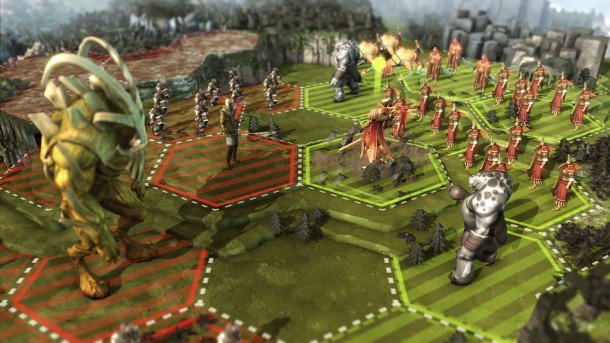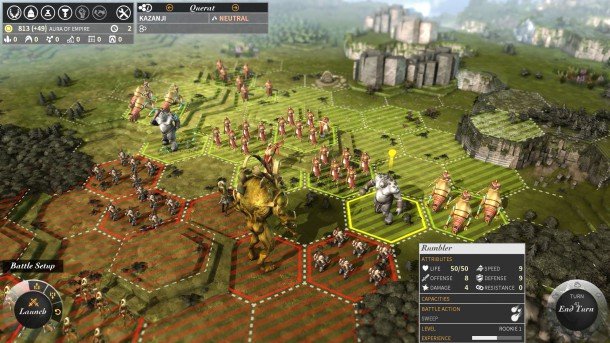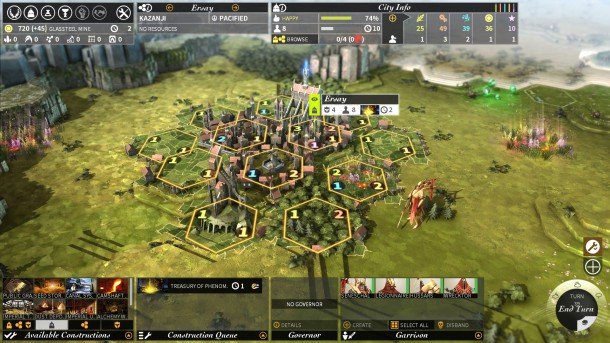Endless Legend preview: making real-time, turn-based combat work

Endless Legend , the fantasy 4X strategy game from Endless Space developer Amplitude Studios, is a month away from hitting Steam Early Access. Endless Legend will be Amplitude's second game to launch on Early Access— Dungeon of the Endless , its roguelike-meets-tower defense experiment, has been playable in an evolving alpha state since late 2013. And the developer has now built its Games2Gether business model around getting player feedback during development.
Last time we saw Endless Legend, Amplitude wasn't ready to show off its combat system, the vital "exterminate" slice of the 4X experience. Now, a few weeks out from Early Access, creative director Romain de Waubert gives me a tour of Legend's strange real-time turn-based battles. Combat in Endless Legend is like knocking over a series of dominoes, if the dominoes were hulking orcs and squads of elven swordsmen and archers placed upon a hex grid that looks an awful lot like Civilization V.
Warfare in Endless Legend plays out in turn-based phases on a macro level. When a battle begins, the game quickly wipes away the details of its vibrant tilt-shifted hex landscape in favor of a cleaned-up battlefield.
"We don't want to go down to micromanagement," de Waubert says. "We want you to stay a general, and while this battle occurs, you can do something else. So we want to make sure you are only at the high levels and giving big directions—like I want to keep that high ground, I want to tactically process the terrain and put the right units in front."

Elevation plays a major role on the map—if one hex is a few levels higher than surrounding hexes, its sides will be blocked off by impassable cliff faces. A height advantage also gives units like archers an expected combat bonus.
de Waubert says that intelligently using those elevation differences is key in combat, since there's no micromanagement. You give each unit a simple order—where to move and then who to attack—and then end your turn and watch combat play out. Each unit in the battle takes its turn in a sequence that's displayed at the top of the screen.
"Now the battle is happening in real time, but it's turn after turn based on [unit] initiatives," de Waubert explains after giving his units orders and ending his turn. "The faster initiatives play first. The whole trick is to make sure the other guy's units with fast initiatives are being killed first or stopped first. So in a way you can combo and only have your guys play."
The biggest gaming news, reviews and hardware deals
Keep up to date with the most important stories and the best deals, as picked by the PC Gamer team.
By paying attention to that sequence, you can target the enemy units that are moving first and potentially wipe them out before they get to attack. Dominoes.
Long battles can play out over three phases, with multiple turns in each, though the skirmish I watched de Waubert manage ended in only two turns. He lost.

"I should not have lost that battle," he says laughing. "It's all about how you place your troops and which you place first. It's high strategy: more about the big decisions and not the extreme details that, in a way, I think are the same [in many 4X games]. I think it's more interesting to have to play on the initiatives and have a combo where the others can never play."
While you're making turn-based combat choices, other players in a multiplayer game can wander into range of a skirmish and watch the elves and trolls and other fantasy warriors take their turns in real time. It's a strange hybrid, and I didn't get a chance to see how smoothly everything will mesh together in a real game.

Wes has been covering games and hardware for more than 10 years, first at tech sites like The Wirecutter and Tested before joining the PC Gamer team in 2014. Wes plays a little bit of everything, but he'll always jump at the chance to cover emulation and Japanese games.
When he's not obsessively optimizing and re-optimizing a tangle of conveyor belts in Satisfactory (it's really becoming a problem), he's probably playing a 20-year-old Final Fantasy or some opaque ASCII roguelike. With a focus on writing and editing features, he seeks out personal stories and in-depth histories from the corners of PC gaming and its niche communities. 50% pizza by volume (deep dish, to be specific).

